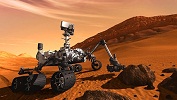NETS serves as a major communications network and forum for professionals and students working in the area of space nuclear technology. The NETS meeting facilitates the exchange of information among research and management personnel from international government, industry, academia, and the national laboratory systems.
 NETS 2013 will address topics ranging from overviews of current space programs to methods of meeting the challenges of future space endeavors, with a focus on nuclear technologies and applications. See the NETS program page for meeting tracks and topics.
NETS 2013 will address topics ranging from overviews of current space programs to methods of meeting the challenges of future space endeavors, with a focus on nuclear technologies and applications. See the NETS program page for meeting tracks and topics.
NETS 2013 is hosted by the Aerospace Nuclear Science and Technology Division (ANSTD) of the American Nuclear Society with co-sponsors Aerojet and the ANS Trinity Local Section.
Register Now
Hotel Reservations
See the Nuclear and Emerging Technologies for Space meeting page for much more information. We hope to see you in Albuquerque.
___________________________
 The 2013 ANS Topical Meeting on Nuclear and Emerging Technologies for Space (NETS 2013) will be held February 25-28, 2013, at the Albuquerque Marriott in Albuquerque, New Mexico.
The 2013 ANS Topical Meeting on Nuclear and Emerging Technologies for Space (NETS 2013) will be held February 25-28, 2013, at the Albuquerque Marriott in Albuquerque, New Mexico.

 NETS 2013 will address topics ranging from overviews of current space programs to methods of meeting the challenges of future space endeavors, with a focus on nuclear technologies and applications. See the NETS
NETS 2013 will address topics ranging from overviews of current space programs to methods of meeting the challenges of future space endeavors, with a focus on nuclear technologies and applications. See the NETS 




